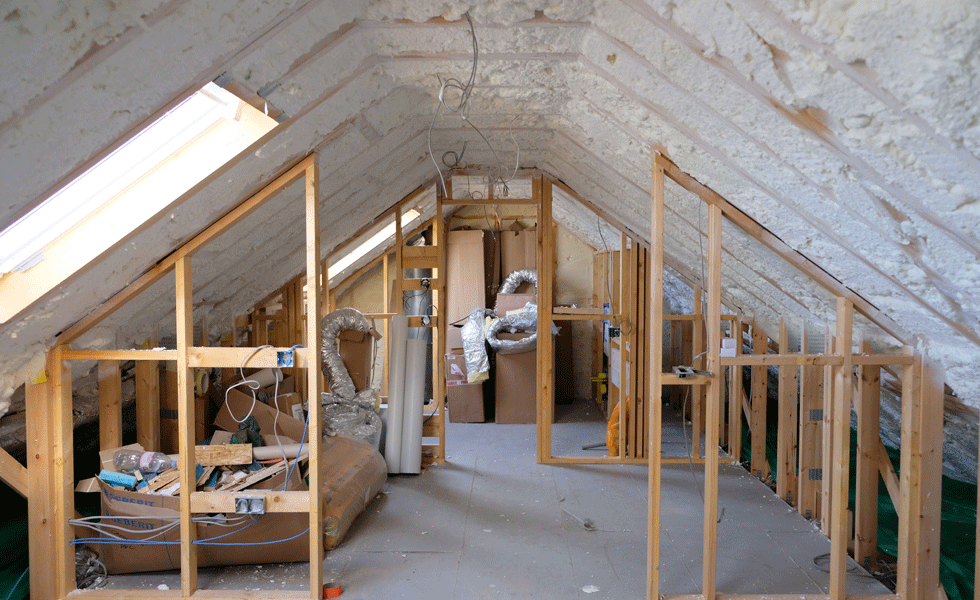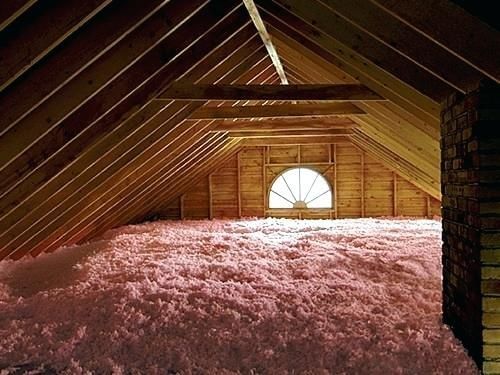Why Attic Insulation DFW is Essential for Energy Effectiveness in Dallas-Fort Worth
Wiki Article
Discover the Various Kinds Of Attic Insulation and Their Special Benefits for Your Home's Energy Efficiency

Fiberglass Insulation
Fiberglass insulation is one of one of the most commonly utilized products for attic insulation because of its excellent thermal efficiency and cost-effectiveness. Made up of tiny glass fibers, this material effectively catches air, creating an insulating barrier that helps preserve regular indoor temperature levels. Its high R-value per inch makes it especially effective at resisting warm transfer, which is important for power conservation in homes.
Setup of fiberglass insulation is relatively straightforward, frequently available in batts or loose-fill kinds, suiting numerous attic room setups. Furthermore, it is resistant and non-combustible to moisture, decreasing the risk of mold and mildew growth. This resilience adds to its longevity, making fiberglass a practical lasting financial investment for property owners.
In addition, fiberglass insulation is usually made from recycled products, which boosts its eco-friendliness. The material can also add to soundproofing, reducing sound transfer between spaces. While it is important to put on safety gear throughout setup to prevent irritability from the fibers, the total benefits of fiberglass insulation, consisting of power cost savings and ecological factors to consider, make it a prominent option for boosting attic room performance and promoting a comfy living setting.
Spray Foam Insulation
Spray foam insulation is an extremely efficient option for attic insulation, recognized for its exceptional air securing and thermal performance. This innovative insulation material is made up of a blend of isocyanate and polyol material, which, when combined, expands rapidly to fill spaces and cavities in the attic room room. Its capability to follow different surface areas makes certain a continuous obstacle against air leaks, dramatically minimizing warmth loss throughout cooler months and warm gain throughout warmer seasons.Among the crucial advantages of spray foam insulation is its high R-value per inch, which suggests it offers superb thermal resistance in a reasonably slim application. This is specifically beneficial in attics where space is usually limited. Furthermore, spray foam can aid lessen wetness accumulation, minimizing the threat of mold and mildew and mold development, which can be harmful to both the structure and indoor air high quality.
While the first cost of spray foam insulation might be higher than typical options, its long-lasting power savings, paired with enhanced comfort and enhanced home value, make it a beneficial financial investment for home owners looking for improved energy efficiency. Attic Insulation DFW. In general, spray foam insulation stands out as a reliable remedy for optimizing attic room insulation
Cellulose Insulation

Cellulose insulation is a preferred option for attic room insulation, largely composed of recycled paper items treated with fire retardants. This environmentally friendly choice is known for its superb thermal performance, effectively lowering warm transfer in both summer and cold weather. The thick composition of cellulose enables it to load voids and voids in attic room rooms, offering a smooth barrier versus air leakages.
One of the considerable advantages of cellulose insulation is its capability to stand up to mold and mildew and bugs, owing to the fire retardant treatments utilized throughout production. Furthermore, it flaunts a high R-value per inch, click now which equates right into superior power performance. House owners can expect reduced heating and air conditioning prices as a result of enhanced insulation.
Installation is typically achieved via blowing loose cellulose into the preferred area, allowing for a effective and fast procedure. This method additionally decreases interruption to the existing framework. Cellulose insulation has a fairly reduced ecological impact, as its manufacturing process makes use of recycled products, adding to sustainable building methods.
Rock Woollen Insulation
Amongst the various alternatives for attic room insulation, rock wool, also understood as mineral woollen, stands out because linked here of its impressive thermal and acoustic efficiency. Made from natural or recycled materials, rock woollen is produced by thawing rock and rotating it into fibers, resulting in a product that offers superb insulation properties.One of the substantial advantages of rock wool insulation is its high R-value, which indicates its effectiveness in standing up to warmth flow. This characteristic not just boosts energy performance yet additionally adds to preserving a comfortable indoor temperature level year-round. Furthermore, rock woollen is naturally fire-resistant, making it a safer alternative for homes as it can endure high temperatures without melting or launching poisonous fumes.
In addition, rock wool insulation succeeds in soundproofing capabilities, successfully reducing noise transmission in between rooms and from outdoors resources. Overall, rock wool insulation gives an extensive remedy for enhancing energy efficiency, security, and convenience in household settings.
Glowing Barrier Insulation
Radiant barrier insulation functions as an effective solution for decreasing heat transfer in attics, particularly in warmer climates. This sort of insulation works by reflecting induction heat away from living rooms, therefore decreasing the amount of warm that goes into a home during heat - Attic Insulation DFW. Normally made up of a highly reflective material, such as aluminum foil, radiant barriers are mounted in attics, encountering the roofing, where they can obstruct incoming warmth from the sunlightThe key benefit of radiant obstacle insulation is its ability to reduced cooling costs. By reflecting heat rather than absorbing it, glowing barriers can help keep an extra steady interior temperature level, lowering the workload on a/c systems. This effectiveness equates into lower energy costs and enhanced comfort for property find more owners.
In addition to energy savings, radiant obstacles can additionally add to improved indoor air top quality. By lowering warm build-up, they help lessen humidity degrees, which can avoid mold development and improve general air circulation. When installed properly, glowing barrier insulation can be an important enhancement to any kind of energy-efficient home, making it a worthy consideration for house owners wanting to boost their attic insulation approach.
Final Thought
In verdict, recognizing the different sorts of attic insulation-- fiberglass, spray foam, cellulose, rock wool, and glowing barriers-- makes it possible for house owners to make educated decisions pertaining to energy performance. Each insulation kind provides one-of-a-kind advantages, such as premium thermal resistance, moisture monitoring, and sound depletion. By picking the ideal insulation product, significant reductions in power costs can be accomplished, along with enhancements in indoor comfort. Ultimately, the ideal selection adds to a more lasting living environment and advertises overall power conservation.

In verdict, comprehending the various types of attic room insulation-- fiberglass, spray foam, cellulose, rock wool, and glowing barriers-- allows property owners to make informed choices concerning energy efficiency.
Report this wiki page